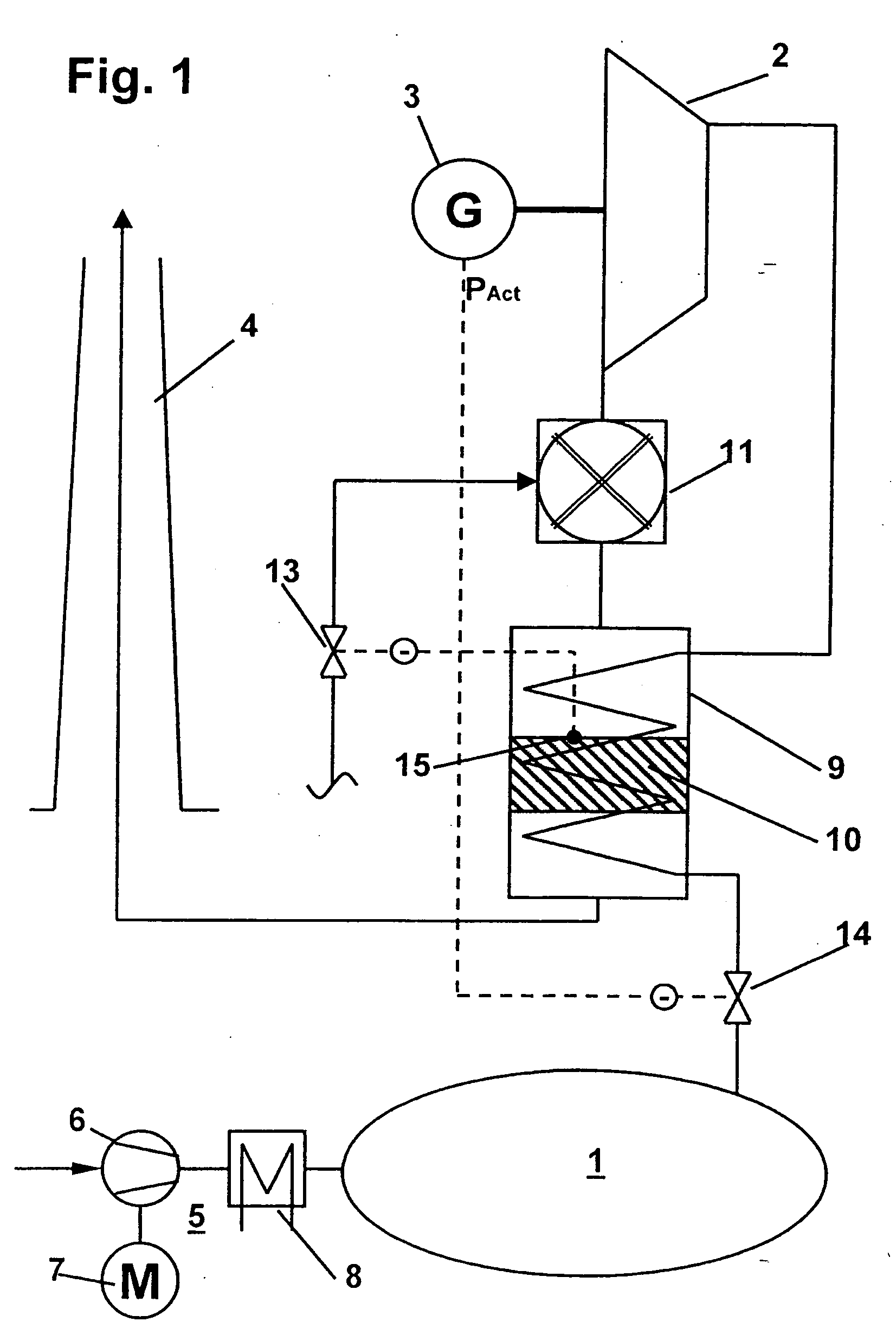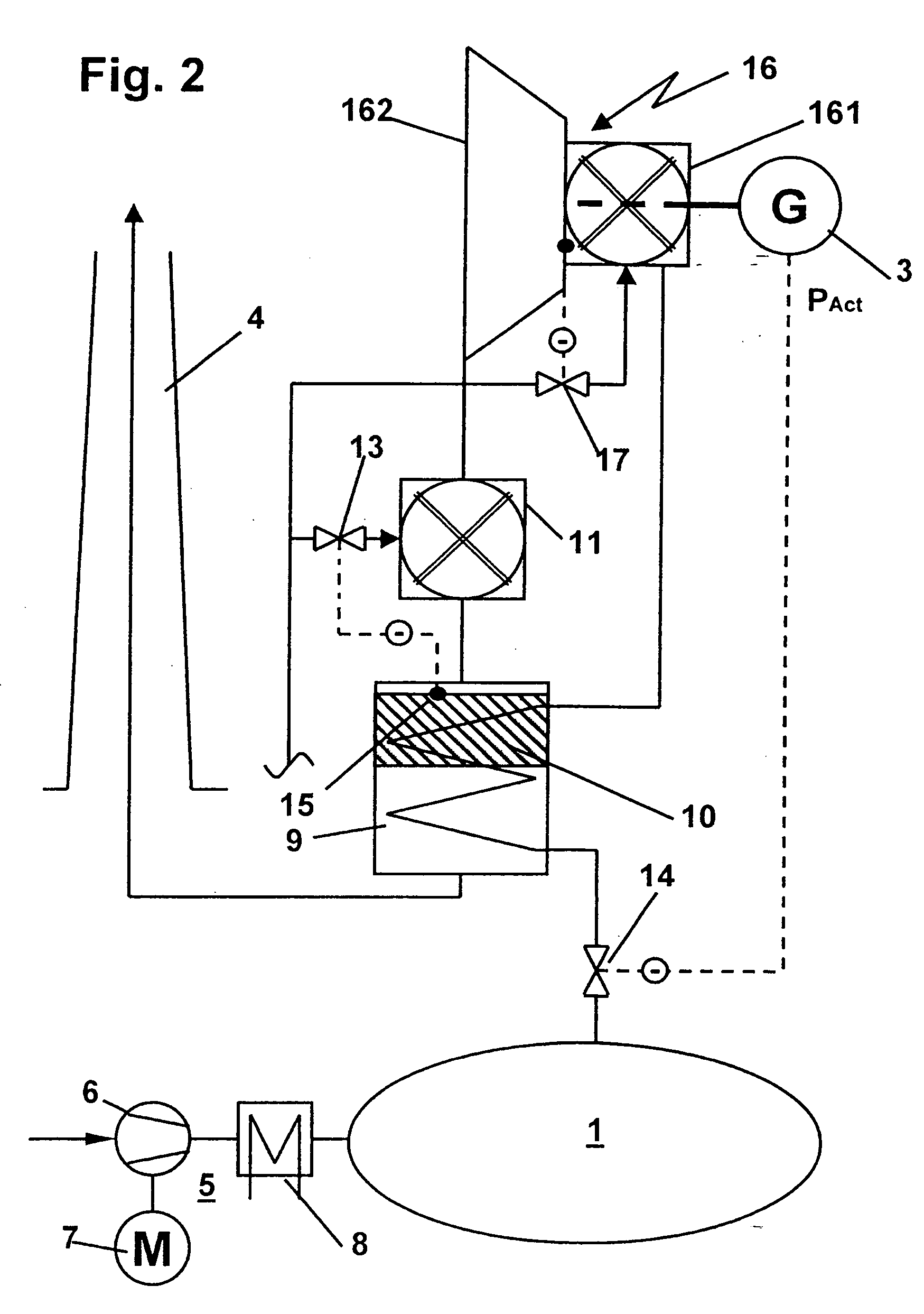Method for operation of a power generation plant
- Summary
- Abstract
- Description
- Claims
- Application Information
AI Technical Summary
Benefits of technology
Problems solved by technology
Method used
Image
Examples
Embodiment Construction
[0022] The power plant depicted in FIG. 1 comprises fundamentally a storage volume 1 for storage of a compressed gas, in particular air, and a turbine 2 for expansion of the storage fluid in a work-producing process, which drives a generator 3 that generates a useful output power PAct. The expanded storage fluid is discharged into the atmosphere through an exhaust flue 4. For loading the storage 1, a compressor unit 5 is provided, although its specific design is not relevant to this invention. A turbocompressor 6 with a drive motor 7 and a condenser 8 are shown as an example. In times of low electric power demand and low electricity price rates accordingly, the compressor unit is operated to load the storage 1 with compressed air. As mentioned in the introduction, and as is easily reproducible, the specific enthalpy gradient over the turbine is very low if air flows from the storage to the turbine 2 and is expanded at approximately ambient temperature. In other words, to generate a ...
PUM
 Login to View More
Login to View More Abstract
Description
Claims
Application Information
 Login to View More
Login to View More - R&D
- Intellectual Property
- Life Sciences
- Materials
- Tech Scout
- Unparalleled Data Quality
- Higher Quality Content
- 60% Fewer Hallucinations
Browse by: Latest US Patents, China's latest patents, Technical Efficacy Thesaurus, Application Domain, Technology Topic, Popular Technical Reports.
© 2025 PatSnap. All rights reserved.Legal|Privacy policy|Modern Slavery Act Transparency Statement|Sitemap|About US| Contact US: help@patsnap.com



